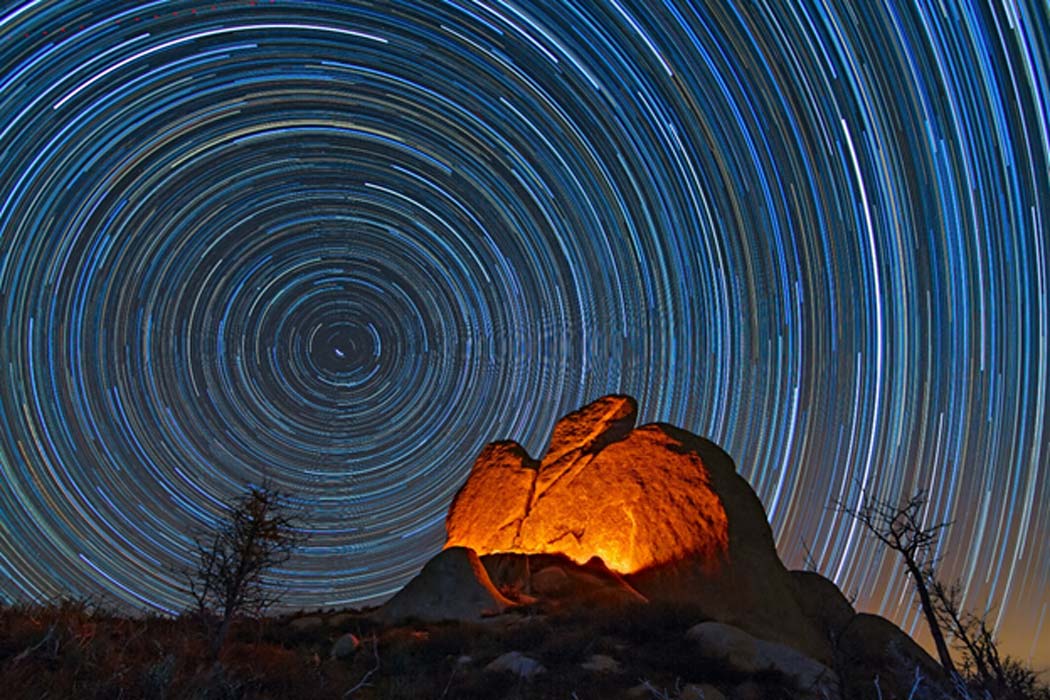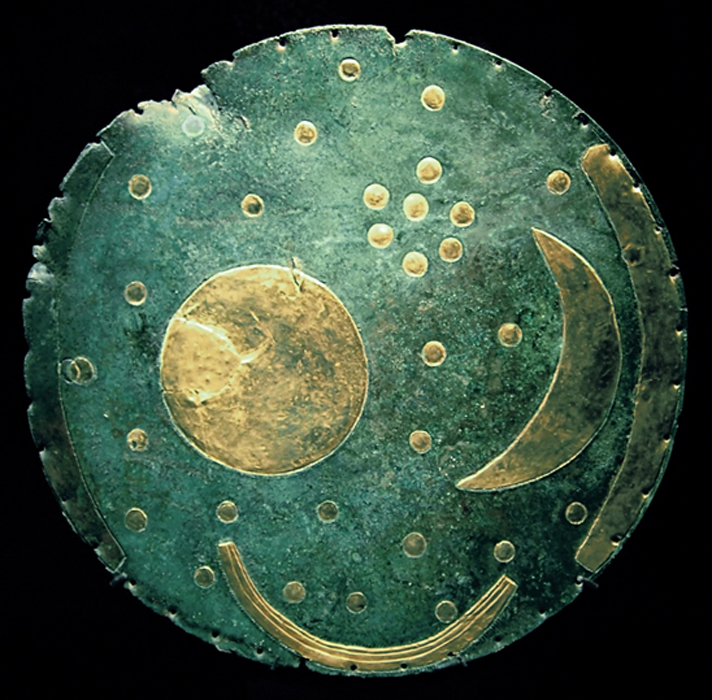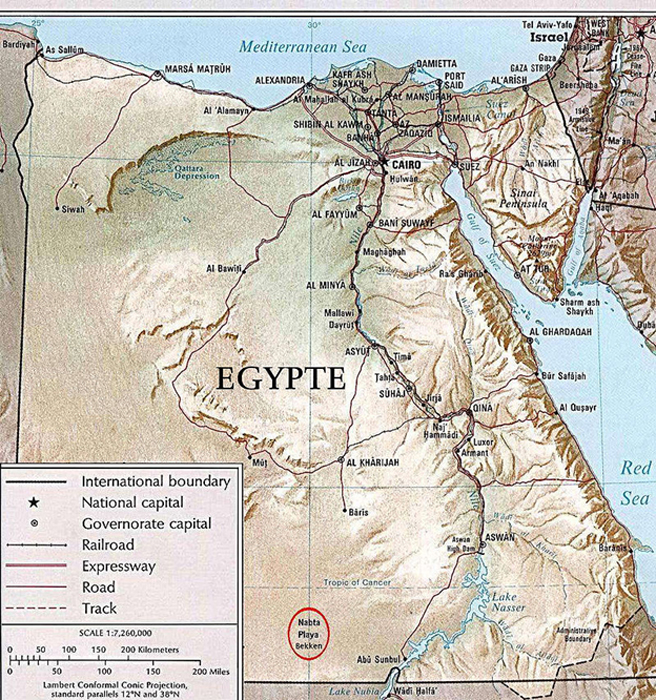
Astronomical Legacy of the Ancient Sky Watchers
Astronomy is the oldest natural science and has calendrical, religious, cosmological, mythological and astrological origins. Long before famous monuments like Stonehenge in England and the pyramids of Egypt were constructed, ancient people around the world built elaborate observation platforms and monumental structures aligned to the positions of the sun, moon and stars on the horizons on significant dates in their calendars, often marking days, weeks and months, which were important to both hunter-gatherer and agricultural societies.

Dated to 1600 BC, The Nebra sky disk is a 30-centimeter (12 inch) diameter bronze disk weighing around 2.2 kilograms (4.9 pounds). The disc features a blue-green patina and is inlaid with gold astronomical symbols including the sun, full moon, a lunar crescent moon and a cluster of stars interpreted as the Pleiades constellation. (CC BY-SA 3.0)
The earliest star gazers were able to differentiate between stars and planets stars, as while stars remained apparently fixed over the passage of centuries, planets moved around the sky during comparatively short periods of time. Ancient people associated natural phenomena such as seasons, rain, heat, drought and tidal change with gods and spirits, as manifestations of Divine Will, and ancient astronomical structures fulfilled astronomical and religious functions.
Before Julius Caesar reformed the calendar in 46 BC, introducing the so called ‘Julian calendar’ which is based on a 365 and a quarter day year, ancient astronomers traditionally linked the month to the phases of the moon and all over the world sky watchers created calendars of twelve almost-equal months, varying between 30 to 31 days. To gain a fuller understanding of which specific celestial occurrences were important to the first astronomers, and to better understand their motives, one must look beyond the modern calendar and venture to a time where the pyramids and vast stone circles were but a celestial dream.
Nabta Playa circa 5000 BC
Located in the Nubian Desert approximately 800 kilometers (497 miles) south of modern-day Cairo, Nabta Playa was once a large internally drained basin in which a setting of megaliths, including a stone circle, were erected about 7,000 years ago. A 1998 edition of Scientific American published an article titled Ancient Alignments by scholar Alan Hall, in which the author noted that the Nabta circle: “bears a striking resemblance to Stonehenge and other megalithic sites constructed a millennium later in England, Brittany, and Europe.

Approximate location of Nabta Playa is indicated by a red circle near the bottom of the map. (Public Domain).
Originally discovered in 1974 by a team of archaeologists led by Southern Methodist University of Texas anthropology professor Fred Wendorf, this ancient site consists of a small stone circle and tomb-like structures and it is known that the stones used to form the alignments of megaliths were: “dragged to the site from an exposed outcrop of sandstone a mile or more away from the site.” This observation stands testimony to the idea that the ‘location’ of stone observatories was far more important than the presence of the required materials to build them.
The April 2, 1998 issue of Nature presented a research article written by archaeoastronomer J. McKim Malville of the Department of Astrophysical and Planetary Sciences at the University of Colorado, who in 1997 used a global positioning satellite system to confirm these megaliths were very carefully aligned. He found two sets of stone alignments in a north-south direction forming a meridian, and a pair of stone slabs pointed: “directly toward the horizon on the summer solstice sunrise”; aligned so carefully that the centerline between the slabs picked up the first gleam of the rising sun at the summer solstice, as it would have been observed 6,000 years ago.




